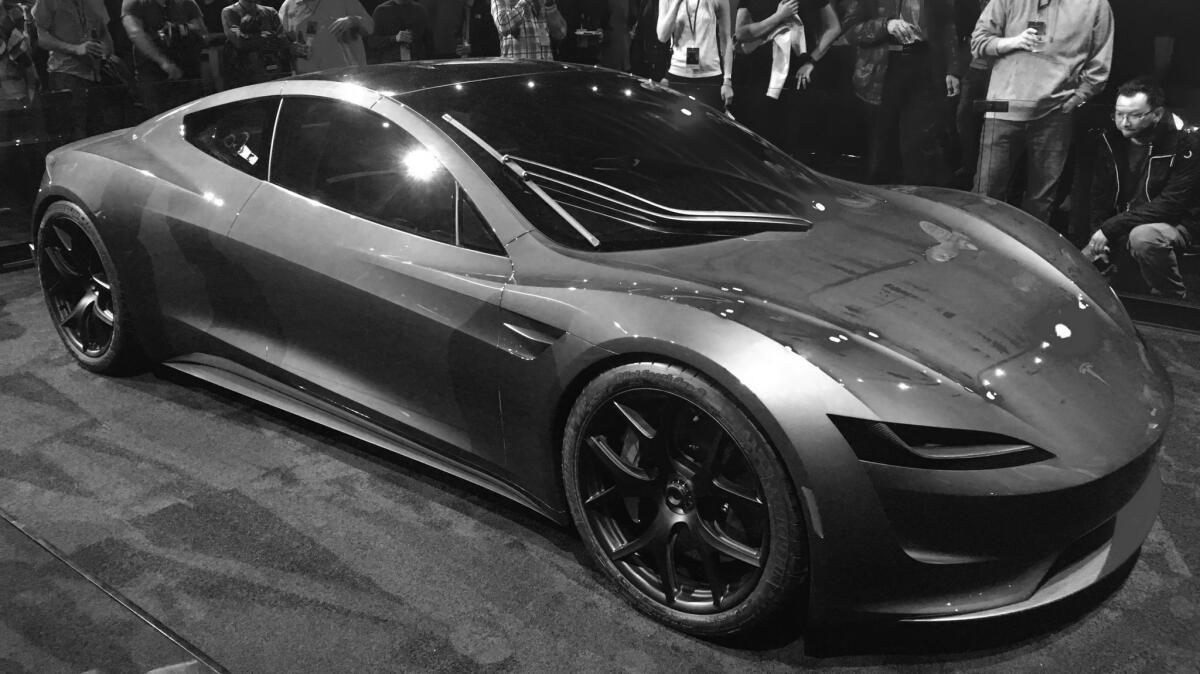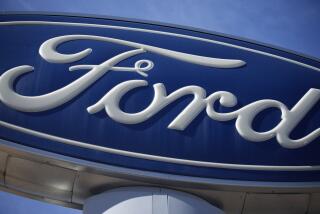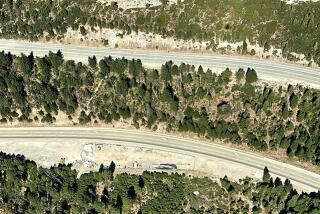Tesla unveils electric truck with 500-mile range — and teases a new sports car

Elon Musk says total operating costs for the Tesla Semi would be lower than for a diesel-driven truck. (Nov. 17, 2017) (Sign up for our free video newsletter here http://bit.ly/2n6VKPR)
Elon Musk unveiled the new Tesla Semi on Thursday night — and surprised everybody with a working prototype of a new Roadster sports car whose purpose, he said, is to “give a hard-core smackdown to gasoline cars.”
Musk claims the car will rocket zero to 60 miles per hour in 1.9 seconds — the first production car to perform the feat in under 2 seconds, he said. Top speed is 250 mph. Price: $200,000.
“It’s just stupid,” he said excitedly, with an enthusiastic crowd of several hundred serving as cheerleaders and on-again, off-again girlfriend actress Amber Heard watching from the wings.
He said production is aimed at 2020.

He was sketchy about the new electric Tesla Semi. Eyebrows popped high when he claimed a range of 500 miles, far more than anyone anticipated. He provided no detail about the size and weight of the battery, but did assert that total operating costs would be lower than for a diesel-driven truck. Experts will be weighing in Friday on how that’s possible.
The truck is scheduled for production in 2019, Musk said.
Whether Tesla can build it in sufficient numbers, with acceptable levels of quality, at a total cost of ownership that makes sense to shipping fleet executives and other bulk buyers of heavy trucks is a different question.
Other truck makers, from International to Volvo to Nikola to Mercedes-Benz, are also developing electric trucks with self-driving capabilities. Tesla won’t have the market to itself.
Before Musk’s theatrics, reporters were led down a spotlighted outdoor corridor flanked by boxed hedges and into a large room that contained four big rigs: two Teslas, a Freightliner Cascadia, and an International. The reporters tended to call the Tesla models “impressive” in appearance.
Jackknifing with this truck is gone. You don’t have to worry about it.
— Elon Musk

No diesel engine under the hood means plenty of room in the cab. Getting in and out is more like climbing stairs than ascending a step ladder. A tall man can comfortably stand in the Tesla cab. The steering wheel is center mounted, with a touch screen on either side. The dashboard is stark, with few gauges, buttons, stalks, or knobs.
The Freightliner and the International cabs were low-ceilinged, crowded and, by comparison, claustrophobic. Tesla representatives said they did not know the model years, though they did not appear to be the latest and the interiors were certainly not the highest end.
Tesla is touting greater safety. “Jackknifing is prevented due to the Semi’s onboard sensors that detect instability and react with positive or negative torque to each wheel while independently actuating all brakes,” a company handout said.
“Jackknifing with this truck is gone,” Musk said. “You don’t have to worry about it.”
Musk claimed the Tesla Semi would go from zero to 60 mph in 5 seconds compared with 15 seconds for a diesel truck. He also said it would climb a 5%-grade hill at 65 mph, compared with a diesel’s 45 mph.
“Megachargers” will be available “worldwide” to recharge trucks to a 400-mile range in 30 minutes. No detail on the megachargers was provided, except that they will be solar-powered. “Your truck is running on sunlight,” he said.
Although Tesla set the car industry afire by proving there was a market for cool-looking high-performance electric cars, the company is a fast follower in electric trucks.
Surround cameras minimize blind spots, Tesla said. The trucks will be equipped with enhanced autopilot and other self-drive and safety features such as automatic emergency braking, automatic lane keeping and lane departure warning.
Practically all the world’s major truck manufacturers are developing electric-drive models, and plenty of start-ups are too — garbage trucks, school buses, delivery vans, medium-duty trucks, big rigs. Some are already deployed.
The profit margins for trucks are in the mid-teens, more than twice as much as for cars. Last year, 249,952 heavy duty trucks were sold in North America. But the heavy truck business is slow-growing overall — only about 0.6% a year, a rate that consulting firm Deloitte expects to continue until 2026.
Because electric trucks are starting from a small base of less than 1% of the total truck market, the segment’s growth rate will be faster. Still, said Antti Lindstrom of IHS Markit, electric penetration of the big-rig market “isn’t going to be very significant until after 2025 or 2030. And even then, it will be very limited compared to the total number of trucks being sold.”
Tesla “clearly sees the promise” of electric trucks, said Michelle Krebs, senior analyst at Autotrader. But the company will need to get a lot better at vehicle quality to compete for a customer base that is less forgiving than passenger-car buyers.
Tesla’s Model X SUV was recently named least reliable in its class by Consumer Reports, and the rollout of the Model 3 sedan has been delayed by production problems at the company’s Fremont auto factory and its Gigafactory battery plant in Nevada.
“The truck is a tool for making money,” Krebs said. “When a truck is out of commission, money is lost. In contrast, a Tesla car owner has other vehicles in the household fleet to drive if the vehicle isn’t operational.”
Musk has promised a long line of new vehicle possibilities, including the big rig, a pickup truck and, probably next up, the Model Y crossover. Tesla will sell about 100,000 vehicles this year, most of them the luxury Model S sedan and Model X sport utility.
That number will include a trickle of Model 3s, a less-expensive sedan. Tesla hopes to build several hundred thousand Model 3s a year, but the car is off to a slow start as Musk grapples with what he calls “production hell” at his factories.
The Tesla Semi will share some components with the Model 3, most notably its four electric motors. Not the battery pack, though. Tesla said the truck will have a different battery setup, more akin to those used in its Powerwall home and industrial storage units than to the batteries for its cars.
Michael Harley of Kelley Blue Book questions Tesla’s strategic direction in targeting long-haul trucks.
“The company has incorrectly aimed its sights,” he said. Batteries remain too heavy and expensive for long-haul routes, he said. “A more appropriate target … would be the short-haul, or so-called last-mile delivery.”
Most of the electric big rigs coming on the market will be built for short-haul routes, such as moving freight from an ocean port to a distribution center.
Platooning could change that equation. In a truck platoon, several big rigs pack up close enough together to be drawn along by the aerodynamic draft of the vehicle ahead, like cyclists lined up in a bike race. That would extend the range of the batteries in the following truck.
The distance is maintained by sensors attached to a computer. Platooning is legal in eight states including Michigan, Texas and Nevada. Limited testing is allowed in Florida and Utah. Human drivers are required in each truck.
Tesla may have one enthusiastic user locked up: Company watchers would not be surprised if Musk starts using the Tesla Semi to ship batteries 240 miles from Nevada to the Fremont assembly plant. But California law does not allow vehicle platoons.
Tesla is taking reservations for the truck, which will bring needed capital to the cash-burning company.
Twitter: @russ1mitchell
ALSO
Tesla’s entry into truck-making presents a whole new challenge for Elon Musk
Elon Musk’s SpaceX suffers a rocket-engine failure during testing
Richard Branson’s newest space venture, Virgin Orbit, just got a U.S. military contract
UPDATES:
10:00 p.m.: This article was updated with additional details.
This article was originally published at 9:20 p.m.







